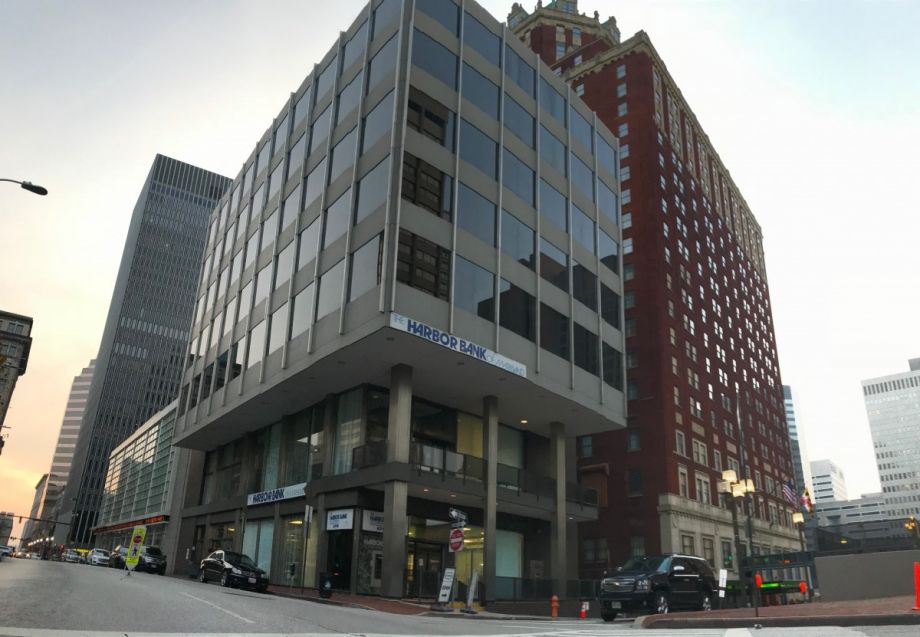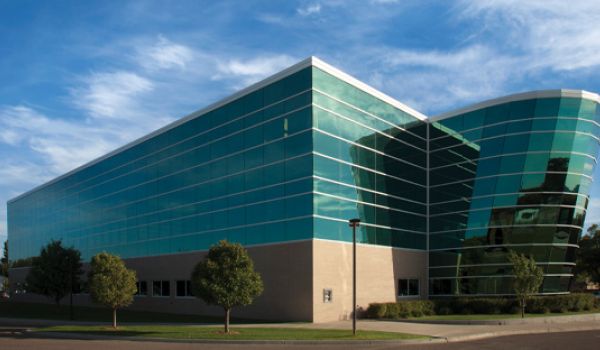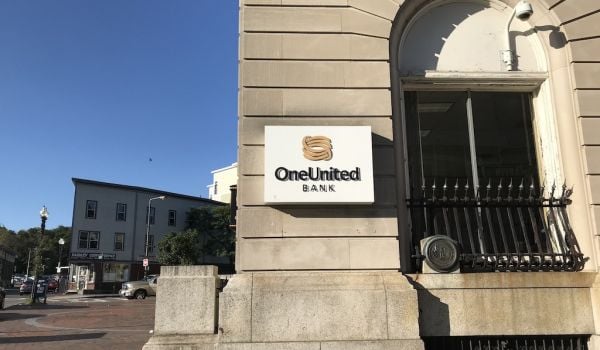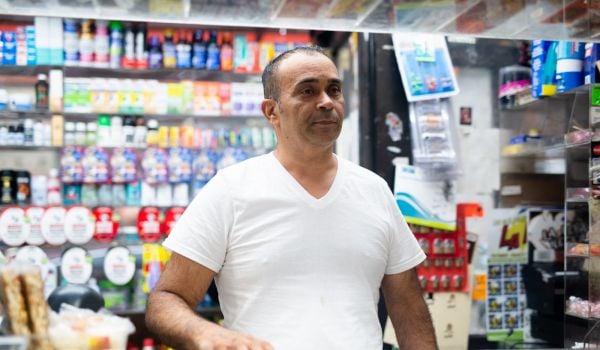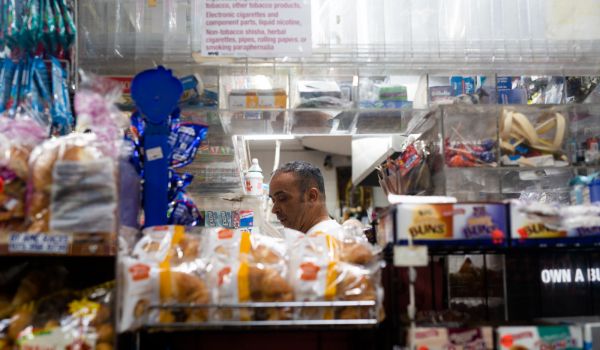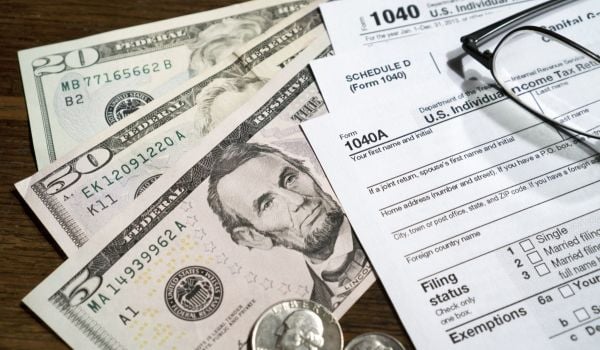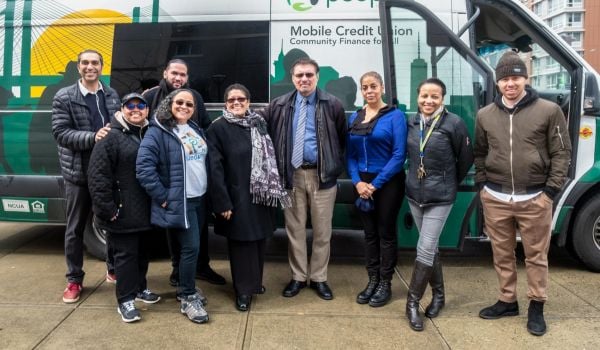If you’ve ever wondered where local developers or local businesses get funding to build, acquire, improve or maintain your neighborhood’s cornerstores or other small storefronts, the answer is probably a community bank.
Despite the ubiquity of the top four largest banks — Chase, Bank of America, Wells Fargo and Citi — community banks collectively still do more commercial real estate lending than these largest four banks combined, according to data reported to federal bank regulators.
Small developers and small businesses still prefer dealing with a small, local bank that can deal with them face-to-face, someone who knows them and knows the neighborhood and can see past what’s on paper to what existing residents in the neighborhood might want to have or want to keep around. Relationships still matter. Place still matters.
“Fundamental in providing credit is understanding where you’re lending,” says John Lewis, CEO of The Harbor Bank of Maryland, a Black-led community bank in Baltimore.
“It’s understanding the market and understanding your borrowers and understanding the character of your borrowers,” Lewis says. “Because community banks are so much a part of the fabric of the communities that they serve, by understanding those communities better, frankly, it allows them to do traditional analysis and assess risk in their communities ultimately better than folks from out of market might assess that risk.”
But relying on relationships and place to drive access to credit has its downsides, particularly in a country where communities tend to be geographically and socially segregated by race. If you’re one of the Baltimore metro area’s 1.7 million white residents, people who look like you own and operate 12 community banks serving people and neighborhoods that look mostly like yours. But if you’re one of the Baltimore metro’s 840,000 Black residents, there’s only Harbor Bank.
That racial disparity wouldn’t matter as much if every bank was equally connected to every community regardless of race. But the evidence so far shows the contrary, according to a new report produced by Johns Hopkins University’s 21st Century Cities Initiative and the National Bankers Association. That’s the main national trade association for minority-depository institutions (MDIs), which are federally-insured banks whose ownership or leadership is at least 51% one or more racial minorities.
There’s some good news. In terms of assets, the report found that MDIs have grown from $246 billion in 2010 to $329 billion in 2022, which percentage-wise roughly mirrors the growth of all FDIC-insured institutions. And although the number of MDIs has declined since 2010, also reflecting the overall trend in the banking sector, there are slightly more MDIs today than there were on the eve of the pandemic.
It’s remarkable and unprecedented given how hard the pandemic hit communities of color, according to Robert James II, chair of the National Bankers Association.
“This is the first time in U.S. history that after an economic convulsion, in this case a pandemic, there are more MDIs, not fewer, and existing MDIs have more capital, not less,” says James, who is also CEO of Carver State Bank in Savannah, Georgia.
In a pattern that is as predictable as it is frustrating, banks still tend to locate branches in neighborhoods that reflect their ownership or leadership. Analyzing bank branch location data from across the country, the new report found MDIs tend to locate branches in ZIP codes whose populations reflect their particular minority designation — Asian, Black, Hispanic, Native or multi-racial. Meanwhile, non-MDI banks (including large banks) locate branches in ZIP codes that are overall 80% white, just 4% Black, 2% Asian and 7% Hispanic.
While it’s true that today white-owned banks do serve people and communities of color, and MDIs also serve some white clients, James says that where branches locate and what the people who own and run a bank look like still matter a great deal.
“Even though banking is becoming far more digital and mobile, there’s still a psychological value for people in seeing an actual bank branch, even if they never go inside,” James says. “To physically see people from that community who raised the capital and have a business model to serve that community is still important, to have bankers and bank leaders who know those communities.”
“The biggest issue in lending is making sure you know the character of the borrower,” James says. “Especially if it’s a new business or new venture, the question is do you believe this person is going to do everything they can to pay you back? It’s important to have someone who can relate to you to give you the benefit of the doubt.”
But there’s another downside to relying on local social networks as part of operating the banking system — local communities themselves must raise the necessary startup capital to charter a bank. If generations of slavery, Jim Crow or other legalized discrimination means some communities have less wealth to invest, it’s harder for those communities to start new banks. Which helps explain why there are so few MDIs, as well as why they aren’t evenly distributed across the country.
“These banks have been undercapitalized for decades, and that’s curtailed their ability to deepen their impact and broaden it across more geographies,” says Anthony Barr, co-author of the new report, and research and impact director for the National Bankers Association Foundation.
According to the report, MDIs have branches in 32 states and U.S. territories, in 92 different cities, and 732 different zip codes. But half of all MDI branches are in just five metropolitan areas — Los Angeles, San Juan, New York, Miami, and McAllen, Texas. The pattern reveals that MDIs tend to locate in urban areas where businesses serving communities of color or immigrant communities tend to emerge, which then generates enough wealth to invest in one or more MDIs serving those communities.
One zip code in Los Angeles County had 23 minority bank branches, representing 17 different institutions, all of which were Asian- or Pacific Islander-American owned or operated. A zip code in McAllen, Texas had 15 minority bank branches from six different institutions, all of which were Hispanic-American owned or operated. At the same time, there are 174 zip codes — with some 3.5 million residents — where a minority bank had the only branch in that zip code.
But having an urban area with at least some concentration of communities of color is no guarantee there will be an MDI. The report cites seven large metropolitan areas with no MDI bank branches at all: St. Louis, Pittsburgh, Phoenix, Cincinnati, Cleveland, Indianapolis and (until recently) Columbus.
Even Chicago, with its 2.7 million residents being one-third white, one-third Hispanic and one-third Black, there’s only three MDIs left. Just one of these MDIs remains on the predominantly Black South Side of Chicago, where it is the last remaining Black-owned bank in a city that once boasted more Black-owned banks than any other.
At the end of the day, the question still needs answering — does having access to banking and credit from an MDI really improve quality of life for communities who have that access? On at least one front, the National Bankers Association found evidence supporting that hypothesis.
Where MDIs do have branches, the new report found evidence pointing to a connection between the presence of an MDI bank branch in a zip code and economic mobility for people of color in that zip code. Barr says it’s not clear yet which direction the relationship goes — does having an MDI branch nearby make households of color more economically mobile? Or do more economically mobile households of color help attract and sustain an MDI bank branch? But there is a correlation between the two, and that, he says, warrants further study.
Barr hopes that the road ahead will lead to more insights through more data sharing, either voluntary data shared with the National Bankers Association from its members — or through the long-awaited implementation of demographic reporting requirements for small business lending, mandated more than a decade ago as part of the Dodd-Frank Act.
More data and deeper analysis will also help bring clarity to the question of whether there needs to be more MDIs or if it would just be easier to scale up existing MDIs to reach more places. The answer is most likely a little bit of both, Barr says. Some MDIs have grown over the past decade in part by acquiring other struggling MDIs in other cities. Detroit’s First Independence, a Black MDI, recently opened up its first branch in the Twin Cities.
Columbus only just got a new Black MDI, Adelphi Bank, whose origin story Next City covered earlier this year. There have been other MDIs in Ohio that didn’t survive prior periods of economic turmoil, which almost inevitably hit Black communities harder than white communities. Adelphi Bank is actually named after Adelphi Building Savings & Loan, which had once been located one block from the new bank’s new headquarters in a historically-Black section of the city.
“Creating new MDIs just to create new MDIs wouldn’t be a necessary development,” says Lewis. “But in specific cities where there’s a need like Columbus and there are probably some other markets where folks could come together and meet an unmet need.”
This article is part of The Bottom Line, a series exploring scalable solutions for problems related to affordability, inclusive economic growth and access to capital. Click here to subscribe to our Bottom Line newsletter.

Oscar is Next City's senior economic justice correspondent. He previously served as Next City’s editor from 2018-2019, and was a Next City Equitable Cities Fellow from 2015-2016. Since 2011, Oscar has covered community development finance, community banking, impact investing, economic development, housing and more for media outlets such as Shelterforce, B Magazine, Impact Alpha and Fast Company.
Follow Oscar .(JavaScript must be enabled to view this email address)



